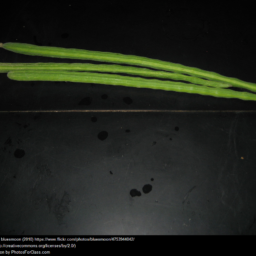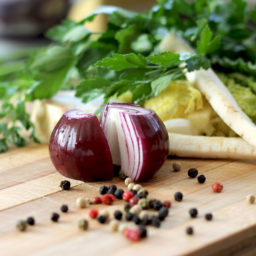Category: Uncategorized
Audacity
Chutney Recipes

Narrated by Pankajam Sarathy to Latha Sarathy
Tomato Chutney Recipe:
- You will need six tomatoes, 2 tbs of Sambar powder, 1 tbs of salt, 1 tbs of Asafoetida powder, mustard seed 1 tbs, oil 1 1/2 cup,
- cut the tomatoes into small pieces.
- put the mustard seeds in a heavy fry pan and four spoon of oil and let them pop.
- Put the cut tomatoes in the pan and fry.
- Keep frying but now lower the heat.
- Once the tomato is soupy place the sambar powder , salt, and Asafoetida powder and any remaining oil and keep frying and any remaining oil as well.
- once everything has cooled down place it in a jar and then in the fridge.
Onion Chutney Recipe:
- You will need 2 big onions, 1 1/2 cup of oil, 6 dried red chili, 1 tbs Puli paste, 1 tbs salt, ingy 1 inch, .
- cut the onion into small pieces.
- In heavy fry pan put four table spoons of oil.
- Put the onion and red chili in the fry pan and fry it for 5 minutes.
- After the mixture has cooled down place it all in a blender with the ingy and salt and blend together.
- back in the frying pan place mustard seeds and fry it, four tablespoons of oil.
- Put the mixture from the blender into the fry pan and fry it all together.
- Add Puli paste and salt and any remaining oil, and curry leaves and fry again.
- Once it ll has the chutney like consistency let it cool and place it in a bottle and put it in the fridge.
Chenna Dhal Chutney Recipe:
- You will need 1 cup Chenna Dhal, 2 spoon oil, 2 green chilies, 1 piece of ingy, 1/2 spoon of salt, 1 cup water, and 1 spoon mustard seeds.
- Fry the chenna dhal with 1 spoon of oil well and set it aside.
- Next in a small mixi put the chenna dhal and blend till its a powder.
- In another mixy add the ingy, salt, chilies, water, and blend for 1 minute.
- Add water and little of the chenna dhal over time to the big mixy and keep blending till it is a paste like consistency.
- in a pan add mustard seed and the remaining oil and fry till they pop.
- once that is done pour the chutney into the fry pan and stir.
- Once it is stirred well place it in jar and put it in the fridge.
- (Optional step) add grated coconut to the end.
Desi Tomato Sauce
This is our favorite sauce for pasta, polenta or any other dish that requires tomato sauce. Why is it desi? Well, because of one secret ingredient.
In essence the sauce has the basic ingredients of all good tomato sauces. Vine ripened tomatoes, good quality olive oil, onions and garlic. The difference is just when all the ingredients have melded together and you have a fat bubbling mix of sauce, that’s when I add the secret ingredient of tomato chutney. The chutney deepens the tomato flavor and adds a strong spicy kick of red pepper.
Recipe
6 vine ripened tomatoes, chopped into small pieces
1 large red onion chopped fine
1 head of garlic, chopped fine
1/2 cup olive oil, more if needed
3 heaping tablespoons tomato chutney
Heat a large skillet and add the olive oil. In 1-2 minutes, once the oil has warmed, add the onion and garlic. Cook, stirring often so that the garlic does not burn. Once onions are translucent add all the tomatoes. Cook for 15-20 minutes until tomatoes are completely melted. Lower heat and add in the chutney. Stir well to evenly distribute the chutney. Add salt to taste.
Let cool and then puree in a blender. I make 1-2 batches at a time and store in the freezer.
Pankajam’s Kitchen – A Story 30yrs in The Making
Pankajam Sarathy is my mother in law. At this point she’s been a part of my life longer than my mother. I’ve been married for 30 years and my mother died when I was 28.
Both women have played an enormous role in my life. Each of their stories are unique as all life stories are. Yet in so many ways, various threads of circumstance, social customs and history have made their lives similar. Many Indian women born when they both were in 1930s pre-independence India had the same themes running through their lives.
Both came from well educated households of modest means. Both were married in their teens. Both of their husbands, though very different people, were the dominant forces in their lives. Each migrated to the US and found their individuality in different ways. For my mother getting a job and working as a professional gave her an identity outside the home.
My mother was not a trail blazing feminist. Quiet, modest with a gentle, calm poise she was someone you never wanted to disappoint because hurting her hurt more than anything else. Yet her job and ability to draw a regular paycheck saved our family and showed the world that she was more than someone’s wife or mother.
For my mother in law, the freedom was food and cooking. Food is what I associate most with her. Cooking it, serving it, sharing, teaching and experimenting.
So this section is about honoring Pankajam, my mother and all the women of their generation. My sharing their recipes, it will be a small way of preserving their wisdom, history and voice.
In addition to her recipes I hope to collect recipes from friends and family around the world.

Cooking Powder
Narrated by Pankajam Sarathy to Latha Sarathy
Cooking powder is a recipe I learned from my mother- in- law. It had been in their family for generations. I really don’t know where the name came from. We all just called it Cooking Powder.
After my marriage at age 16 I started learning recipes with my mother-in-law side by side in our kichen. At that time we lived in Madurai. The apartment was very small. It had a hall, a kichen and a veranda. We slept in the hall, while my in-laws slept in the veranda. We were in that apartment for 3 years. Our rent was 12 rupees and at that time Akila’s grandfather made 60 rupees. With that we ran the whole household. We walked everywhere. The whole 3 years I was in Madurai I never rode on a bus.
The kitchen did not have a gas stove. The stove was made from dried mud. It was sacked high and underneath there was an opening. In the opening we put a piece of dried cow dung. On top of the dung we put a little kerosene and set it to burn. On the top of the mud stove we created 3 small flat mounds where we set the cooking pots.
I remember that to get water we had to go to a well in the middle of the compound. There was a small bucket tied with a rope. I had to drop the bucket down into bring up the water. Then I had to climb up 15 steps to get to our flat. We had to do this to get water for cooking, washing, for everything
Now, here in the U.S., I make it for Akila. She really likes it. But I always make enough to take with me when I go to India. Nobody makes it there anymore, no one has the time.
Recipe
- 10 teaspoons tamarind paste/amchur powder
- 10 teaspoons sambar powder
- 4 teaspoons tumeric powder
- 10 teaspoons salt
- 4 teaspoons hing
- 4 teaspoons asfoetedia
- 4 teaspoons mustard seeds
- 3 full curry leaves
- 1/2 cup coriander seeds
- 1/2 cup black sesame seeds
- 1/2 cup channa dhal
Step 1: Dry roast the black sesame seeds in a skillet for 1-2 minutes, until you hear the seeds pop. Put the seeds in a coffee grinder and grind to a powder. Remember to always grind the sesame seeds separately because the sesame seeds will give off a small amount of oil.
Step 2: Add the curry leaves, coriander seeds and channa dhal to the skillet. Dry roast for 1-2 minutes. Grind in coffee grinder to a powder and add to sesame seed powder.
Step 3: Place the tamarind paste, sambar powder, tumeric powder and salt in a mixing bowl. Add 2-3 tablespoons water and knead until the mixture forms a tight, cohesive ball. Cover the bowl with aluminum foil or a lid and store in a cool, dark place. Inside a pantry or cabinet works well. Store for 2 days to remove raw smell.
After 2 days of storing spread the mixture on a baking sheet and leave in the sun or where there is sunlight for 2 days. Mix it regularly so that there are no lumps. Once it is fully dried out, put in blender or coffee grinder to grind to a fine powder. Then add in the sesame powder mixture and blend well by hand.
Dry roast the mustard seeds and add to mixture. Add the aseofoedia and mix well.
Uses of Cooking Powder
-Substitute for sambar powder when making sambar
-Mix with rice and hot oil for a tamarind rice dish. This can be packed in aluminum foil for traveling. The rice mixture will keep for 2-3 days without refrigeration.
-Cooking powder is great to take while traveling. All you need for a meal is rice and a little oil

Saravanabhavan
Veggies es bonus vobis, proinde vos postulo essum magis kohlrabi welsh onion daikon amaranth tatsoi tomatillo melon azuki bean garlic.
Gumbo beet greens corn soko endive gumbo gourd. Parsley shallot courgette tatsoi pea sprouts fava bean collard greens dandelion okra wakame tomato. Dandelion cucumber earthnut pea peanut soko zucchini.
Turnip greens yarrow ricebean rutabaga endive cauliflower sea lettuce kohlrabi amaranth water spinach avocado daikon napa cabbage asparagus winter purslane kale. Celery potato scallion desert raisin horseradish spinach carrot soko. Lotus root water spinach fennel kombu maize bamboo shoot green bean swiss chard seakale pumpkin onion chickpea gram corn pea. Brussels sprout coriander water chestnut gourd swiss chard wakame kohlrabi beetroot carrot watercress. Corn amaranth salsify bunya nuts nori azuki bean chickweed potato bell pepper artichoke.

Paati Idly recipe
Beetroot water spinach okra water chestnut ricebean pea catsear courgette summer purslane. Water spinach arugula pea tatsoi aubergine spring onion bush tomato kale radicchio turnip chicory salsify pea sprouts fava bean. Dandelion zucchini burdock yarrow chickpea dandelion sorrel courgette turnip greens tigernut soybean radish artichoke wattle seed endive groundnut broccoli arugula.
Catsear cauliflower garbanzo yarrow salsify chicory garlic bell pepper napa cabbage lettuce tomato kale arugula melon sierra leone bologi rutabaga tigernut. Sea lettuce gumbo grape kale kombu cauliflower salsify kohlrabi okra sea lettuce broccoli celery lotus root carrot winter purslane turnip greens garlic.

Murkangai (Drumstick) Recipe
Veggies es bonus vobis, proinde vos postulo essum magis kohlrabi welsh onion daikon amaranth tatsoi tomatillo melon azuki bean garlic.
Gumbo beet greens corn soko endive gumbo gourd. Parsley shallot courgette tatsoi pea sprouts fava bean collard greens dandelion okra wakame tomato. Dandelion cucumber earthnut pea peanut soko zucchini.
Catsear cauliflower garbanzo yarrow salsify chicory garlic bell pepper napa cabbage lettuce tomato kale arugula melon sierra leone bologi rutabaga tigernut. Sea lettuce gumbo grape kale kombu cauliflower salsify kohlrabi okra sea lettuce broccoli celery lotus root carrot winter purslane turnip greens garlic.
